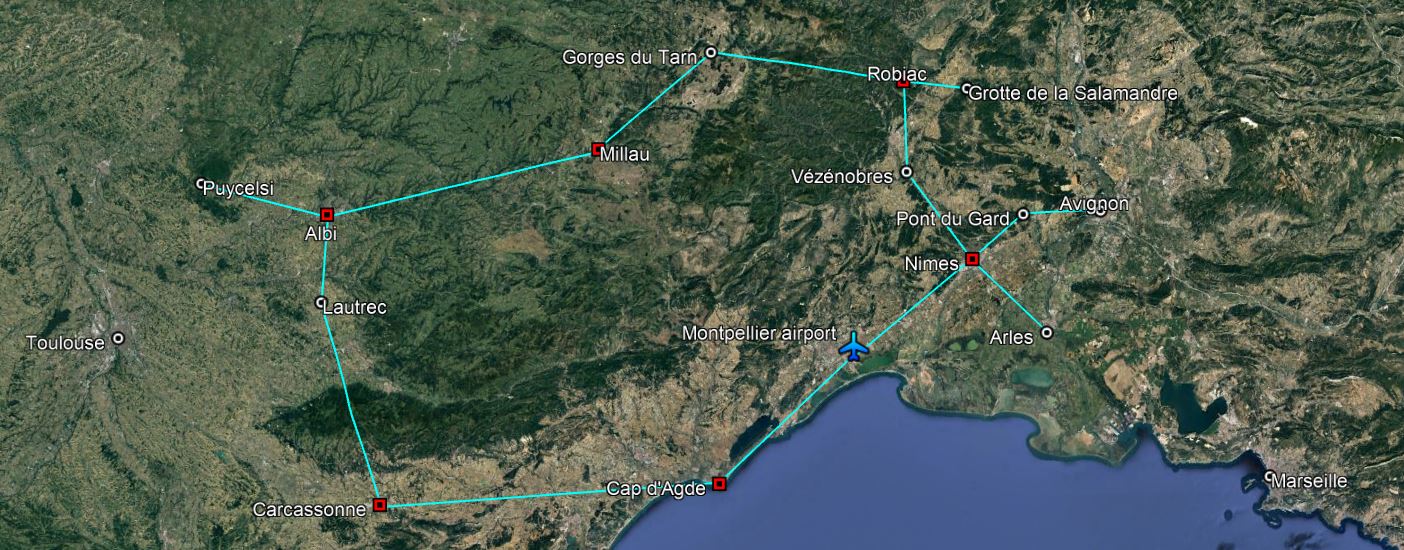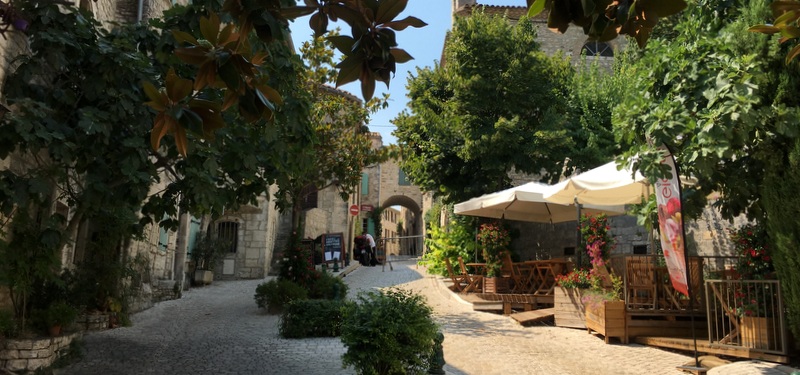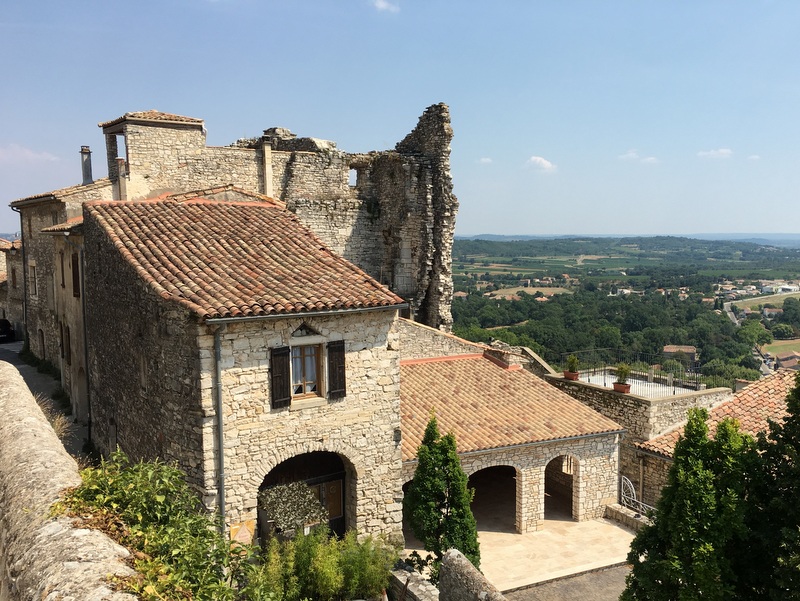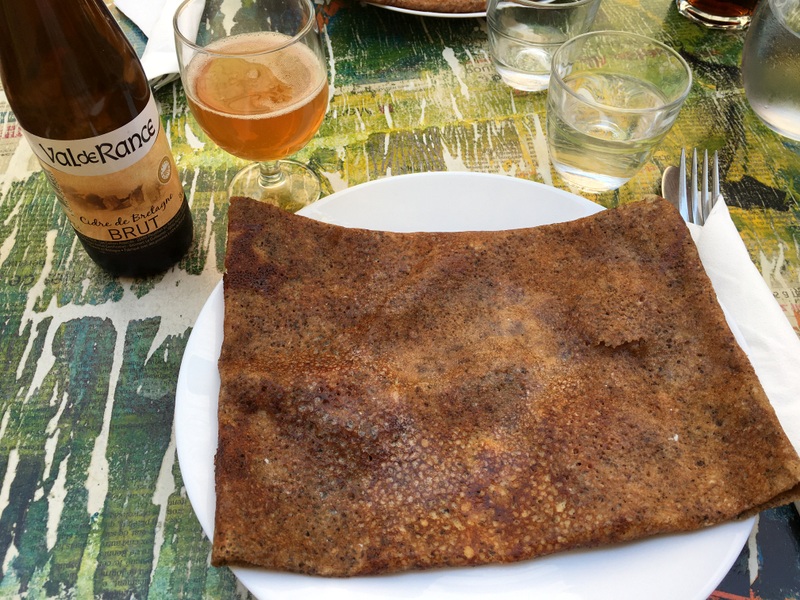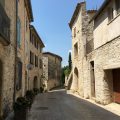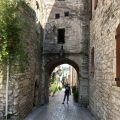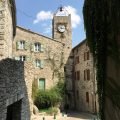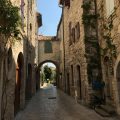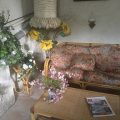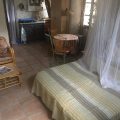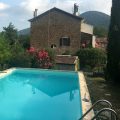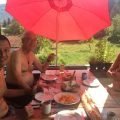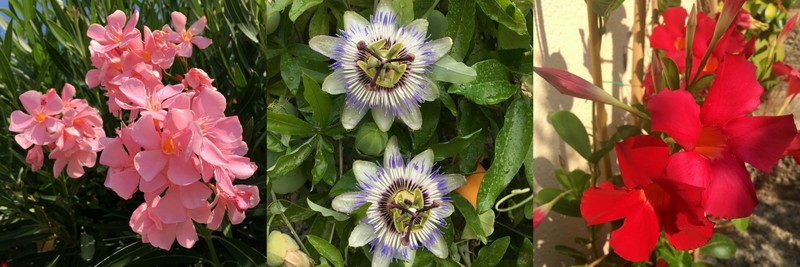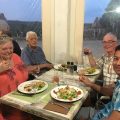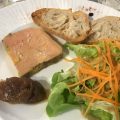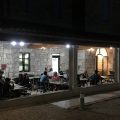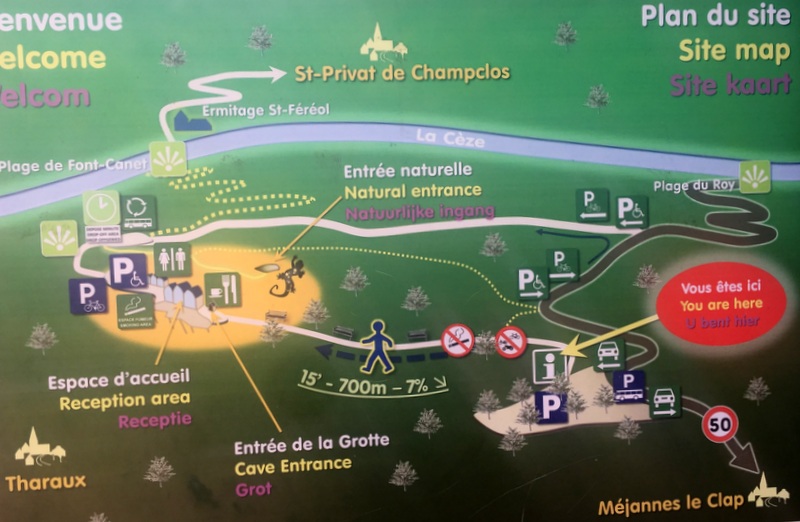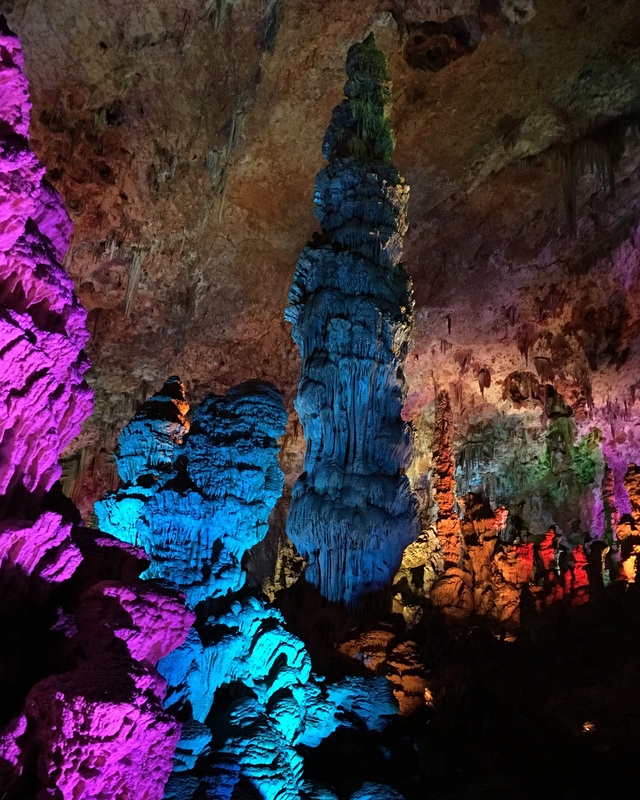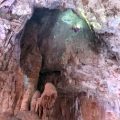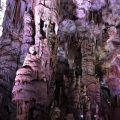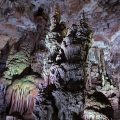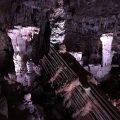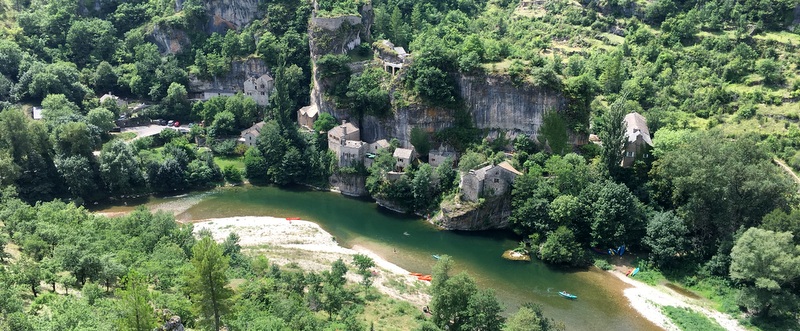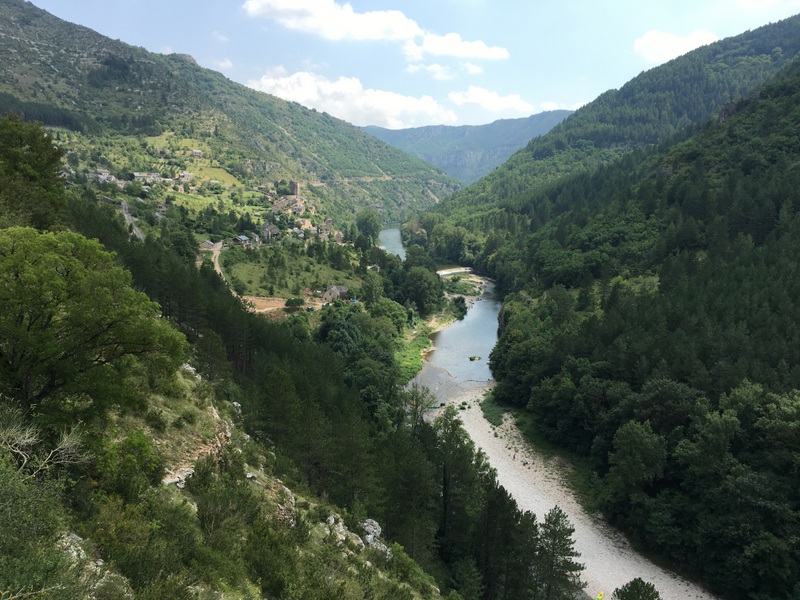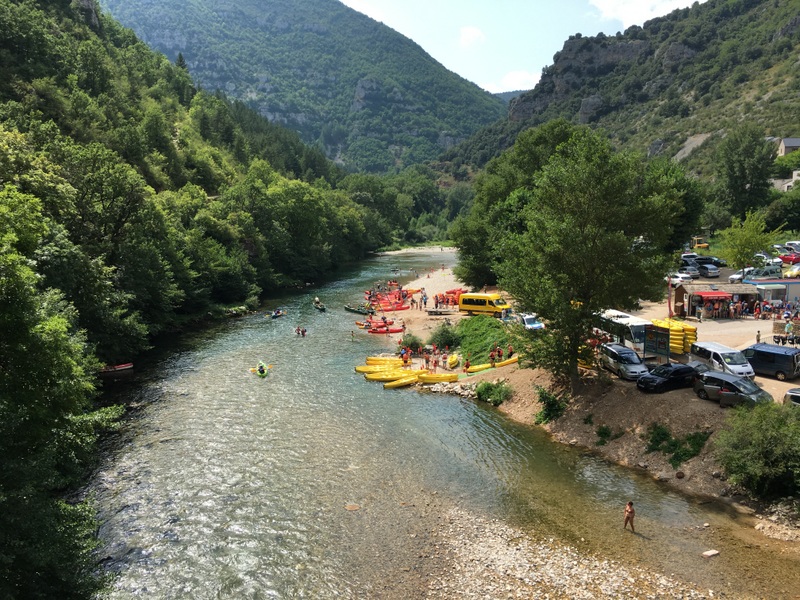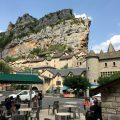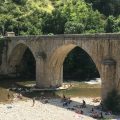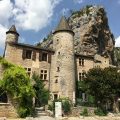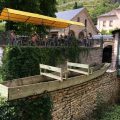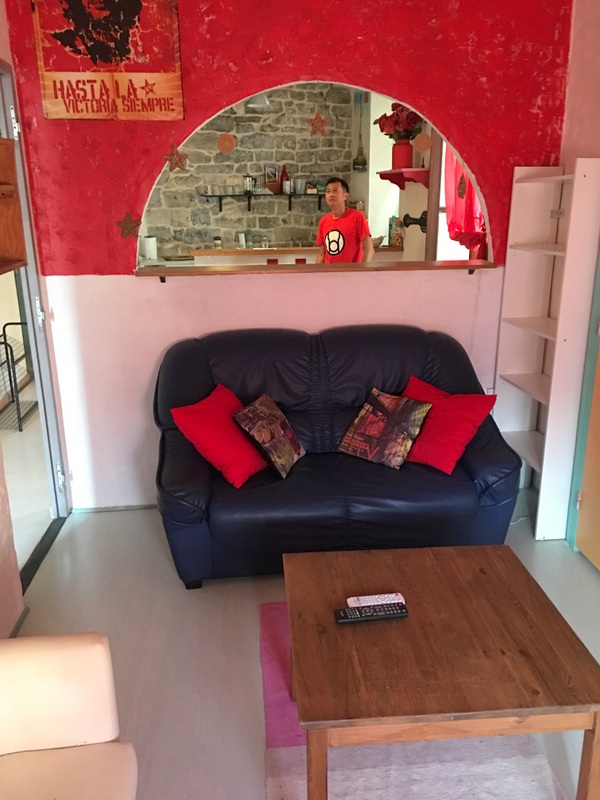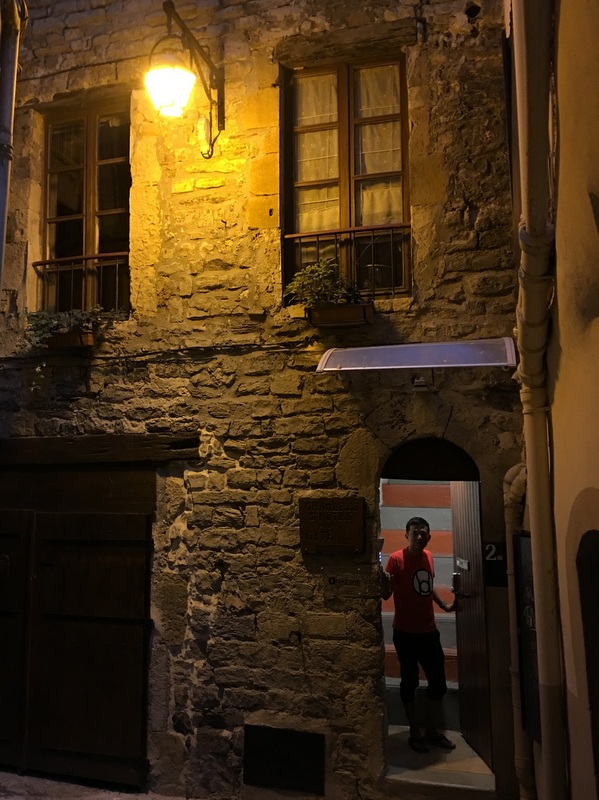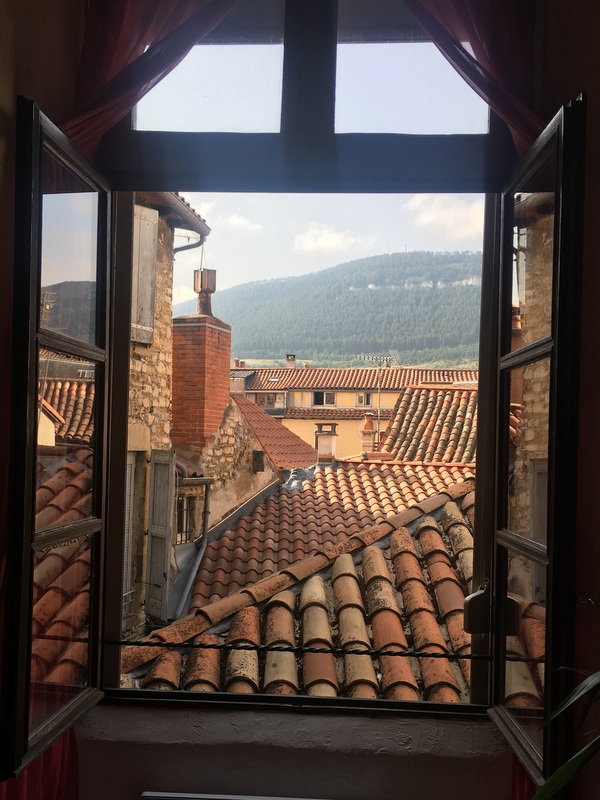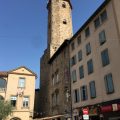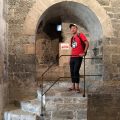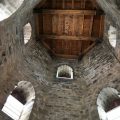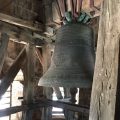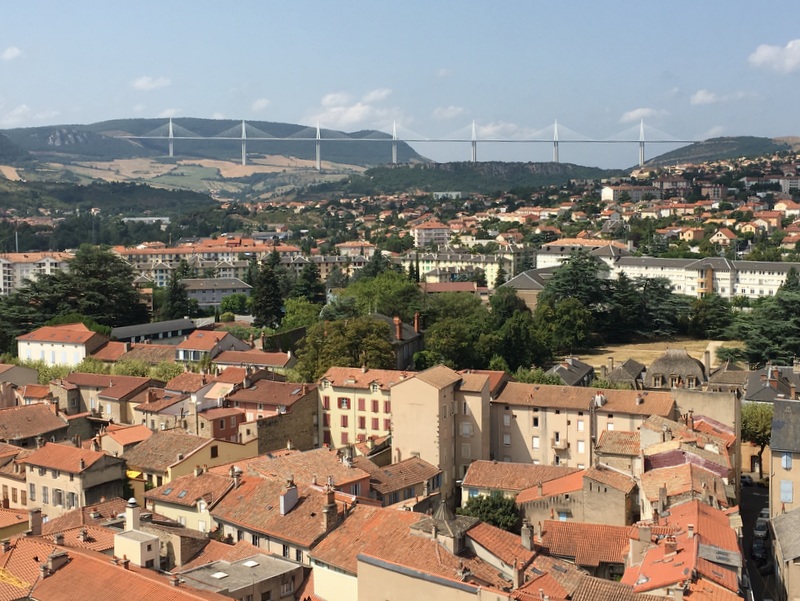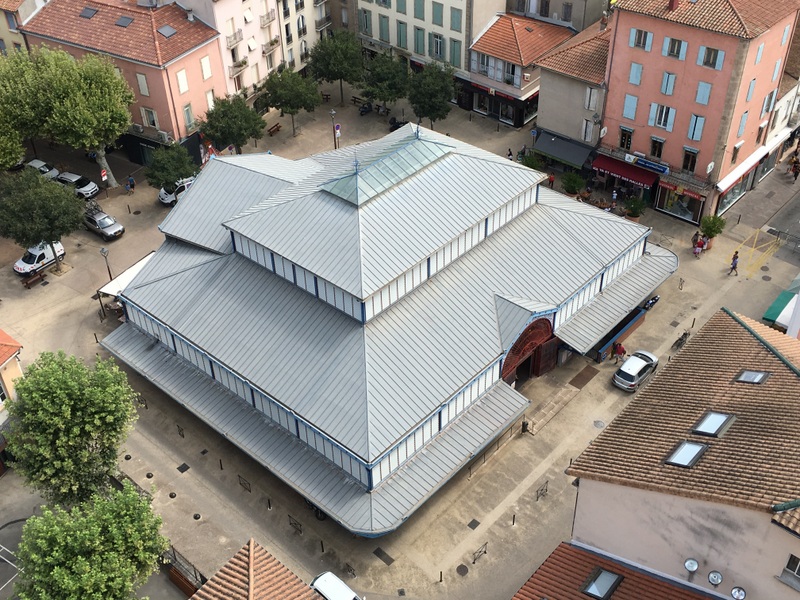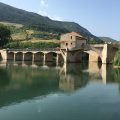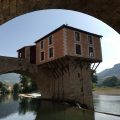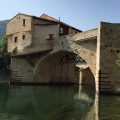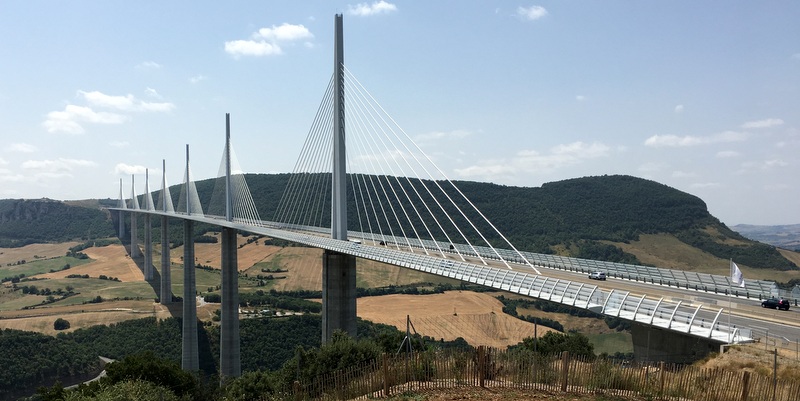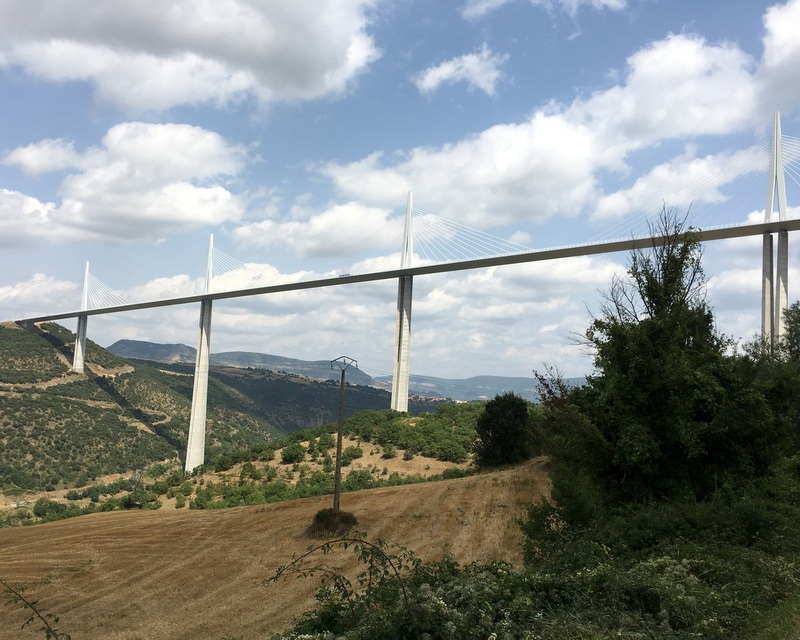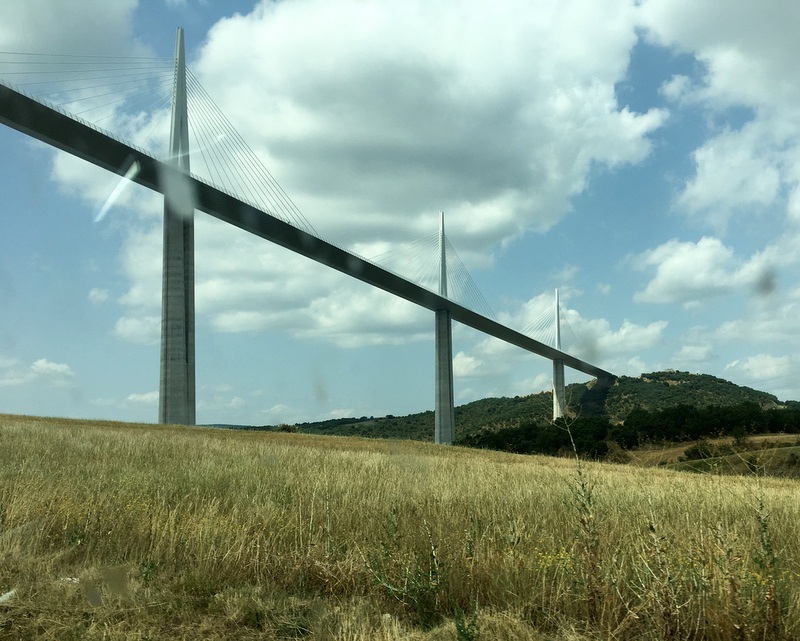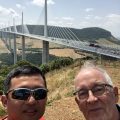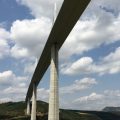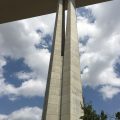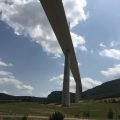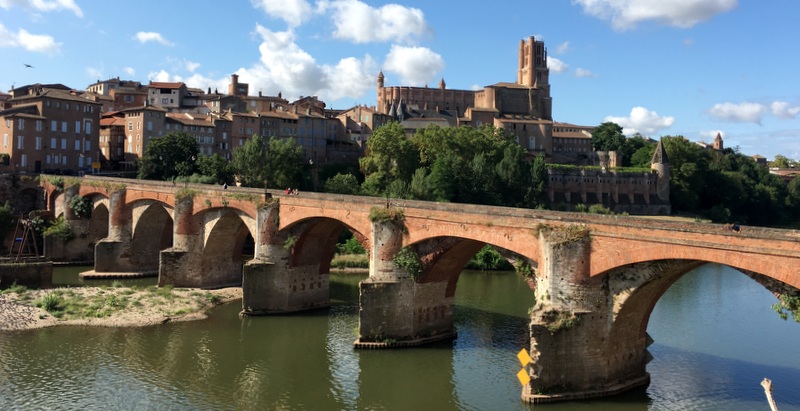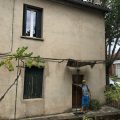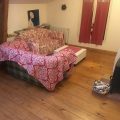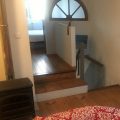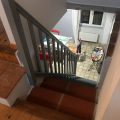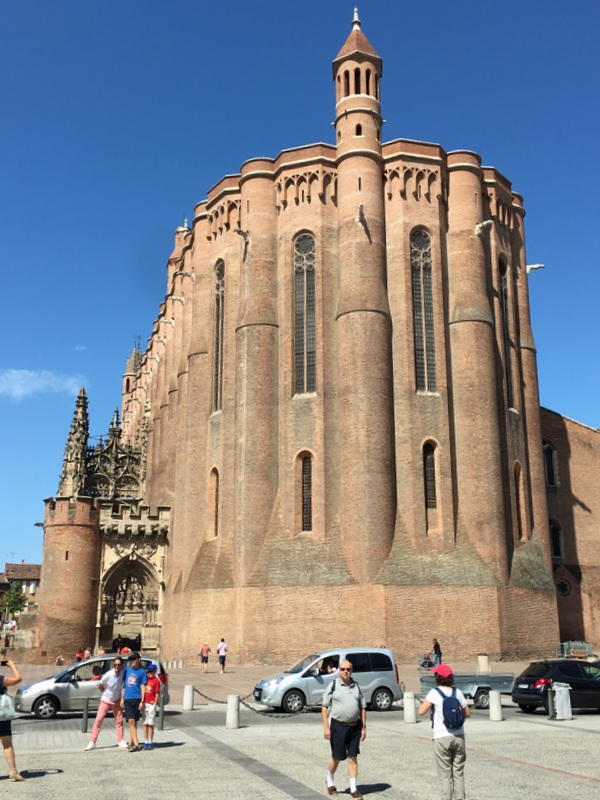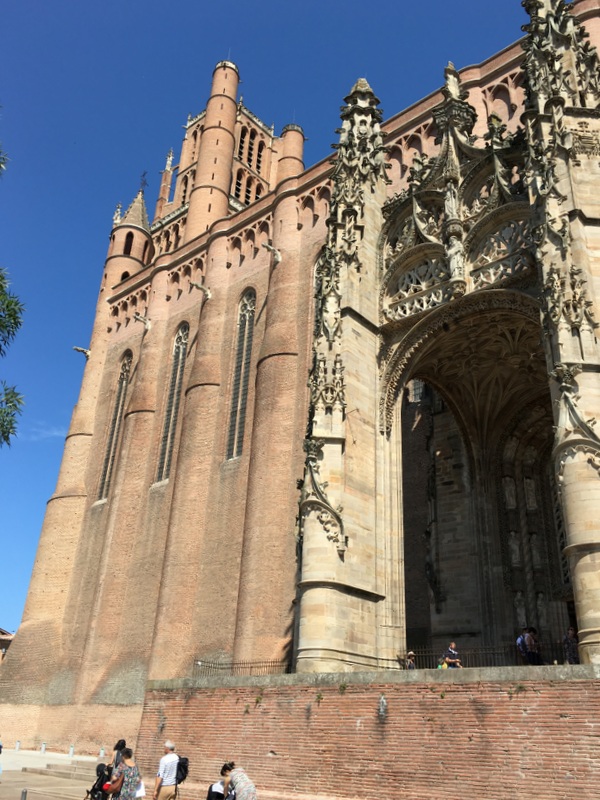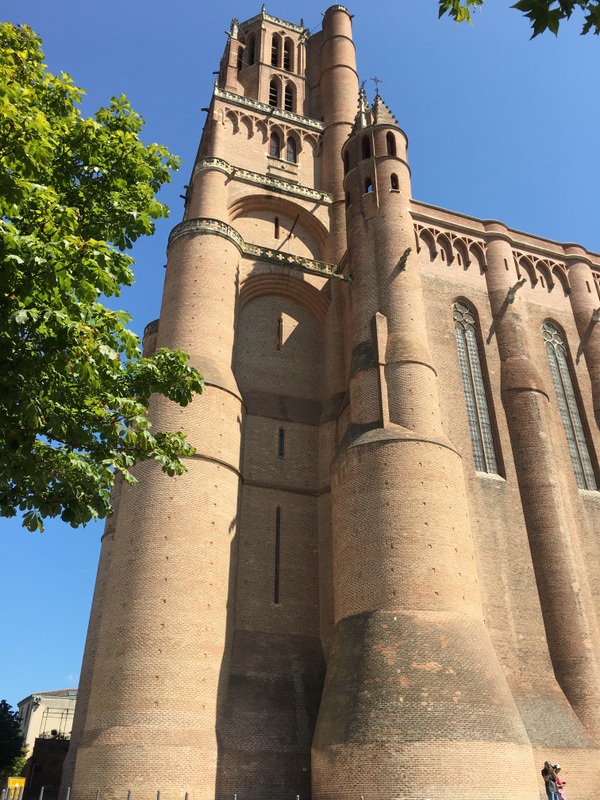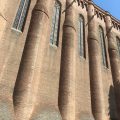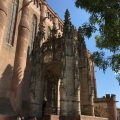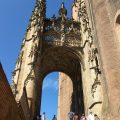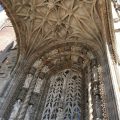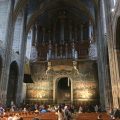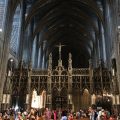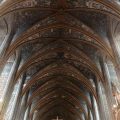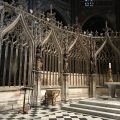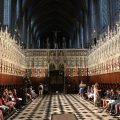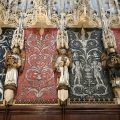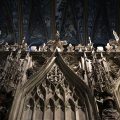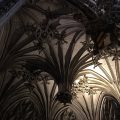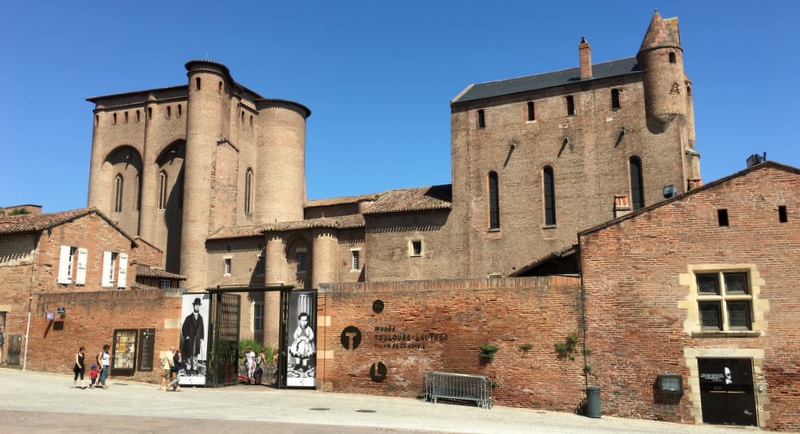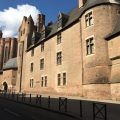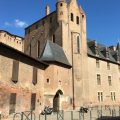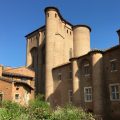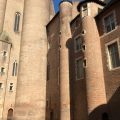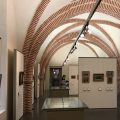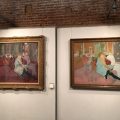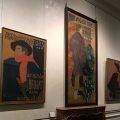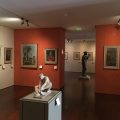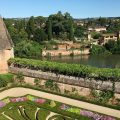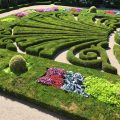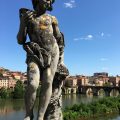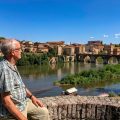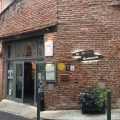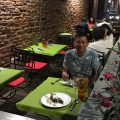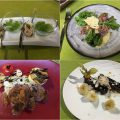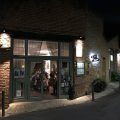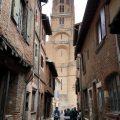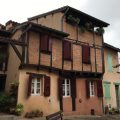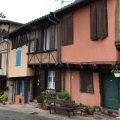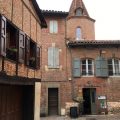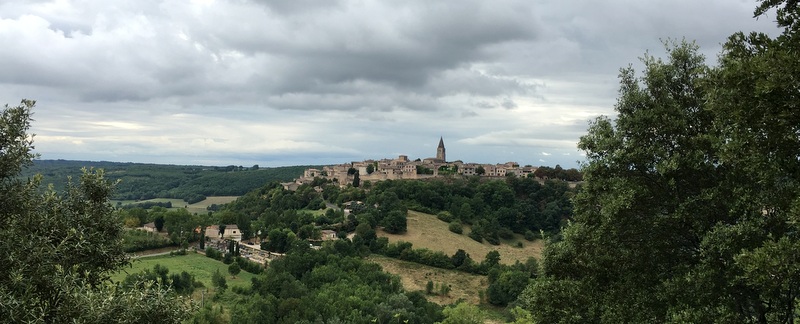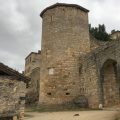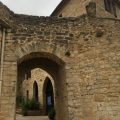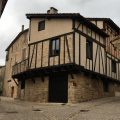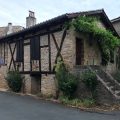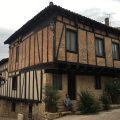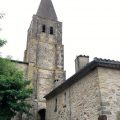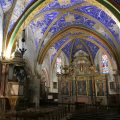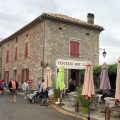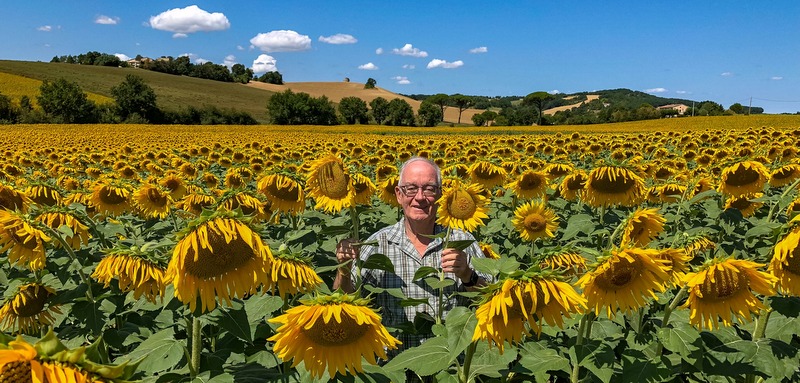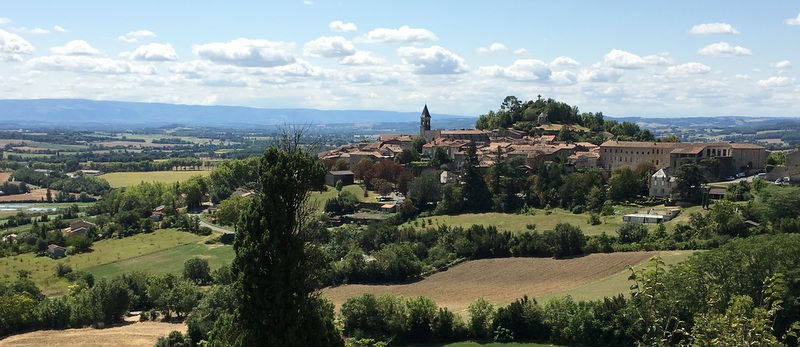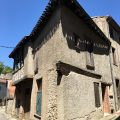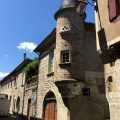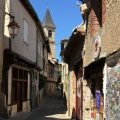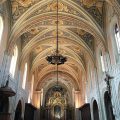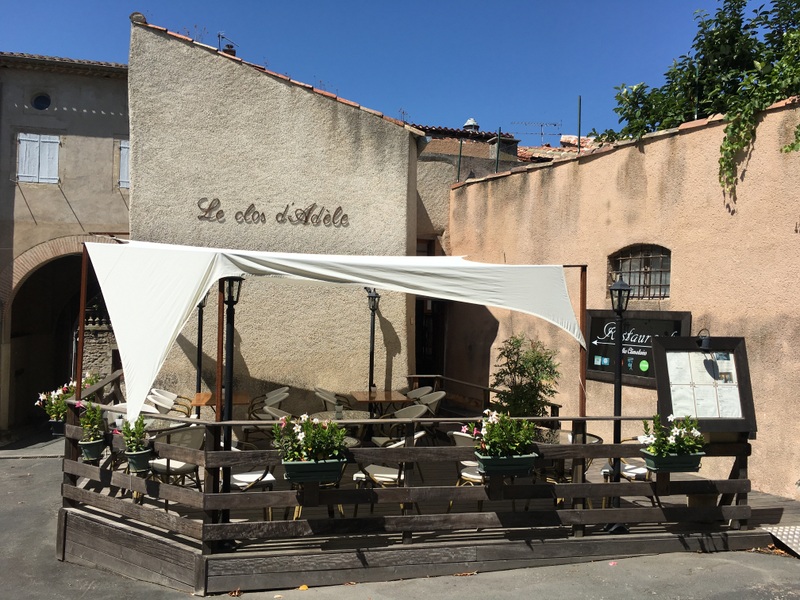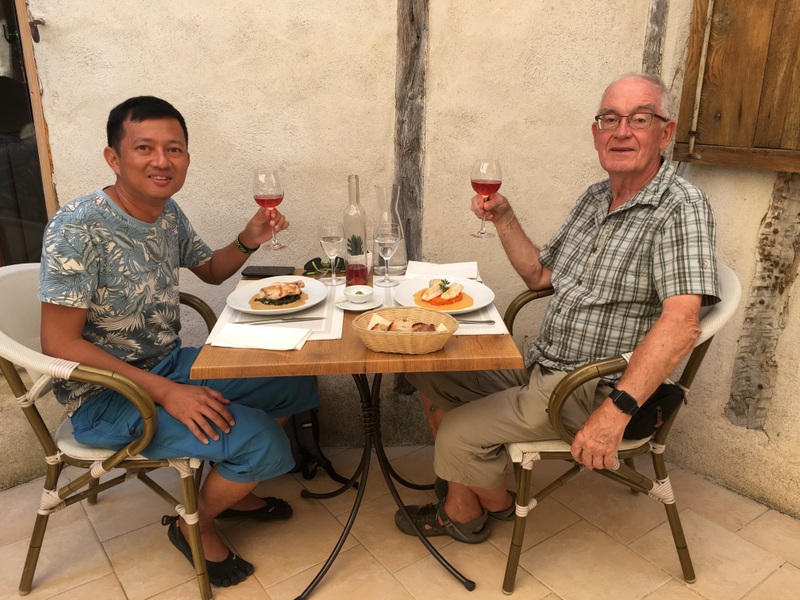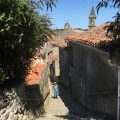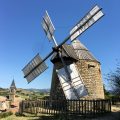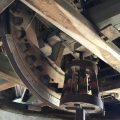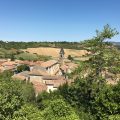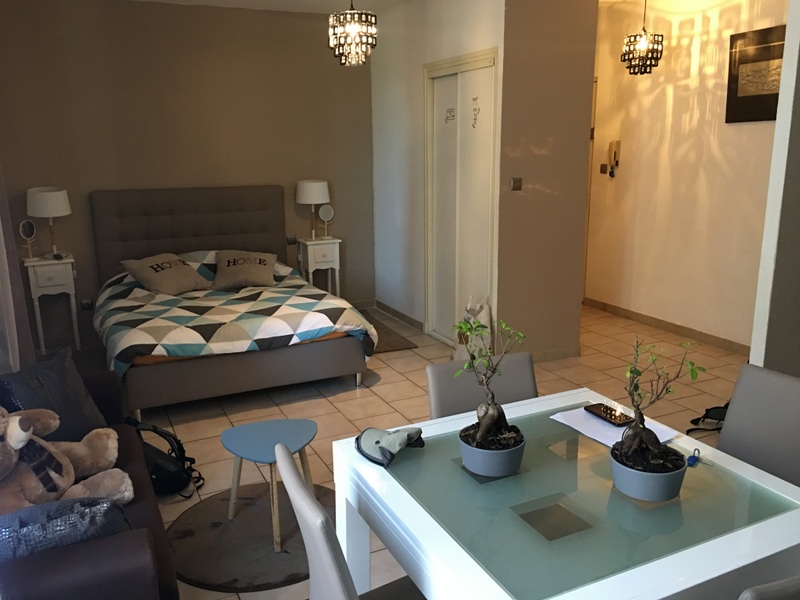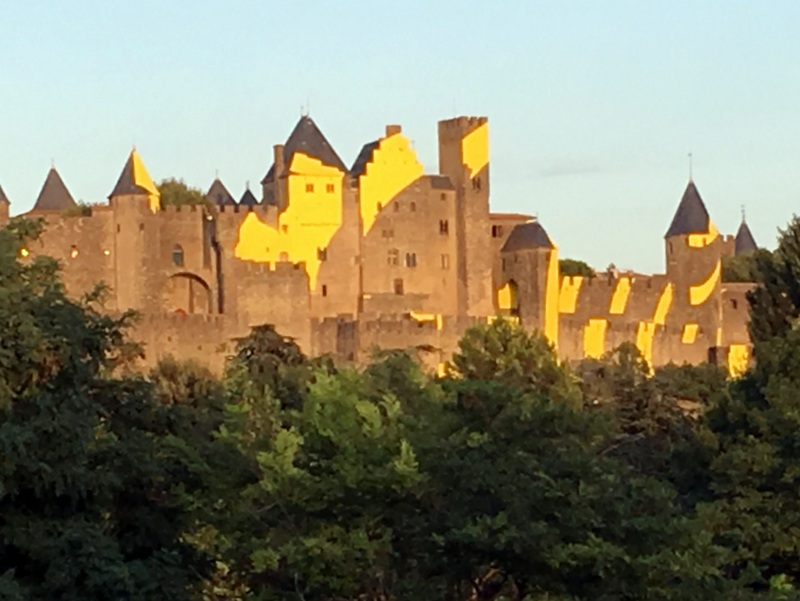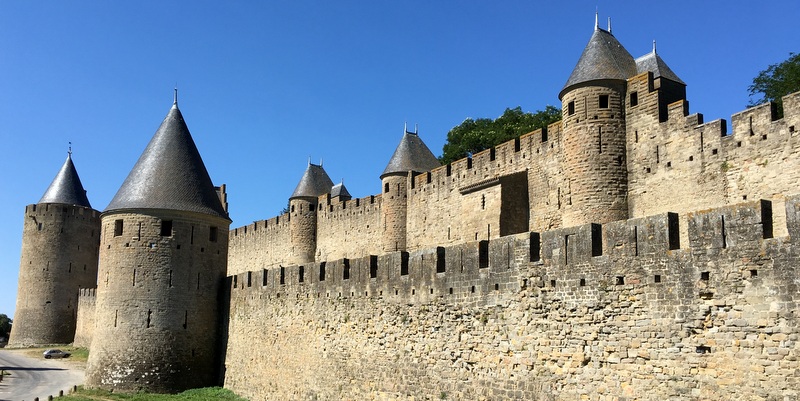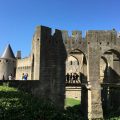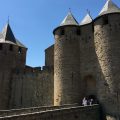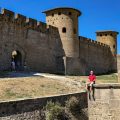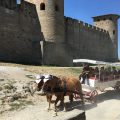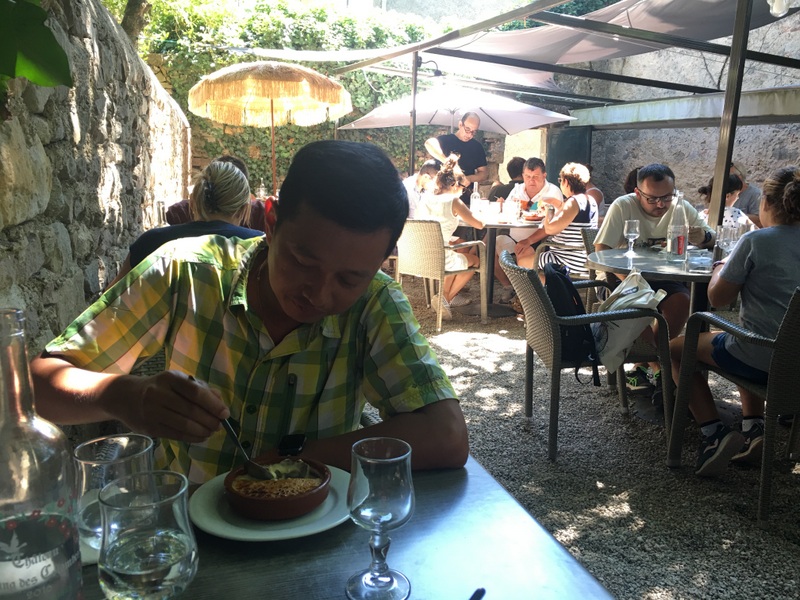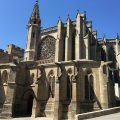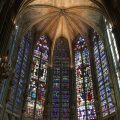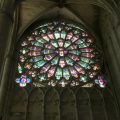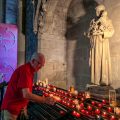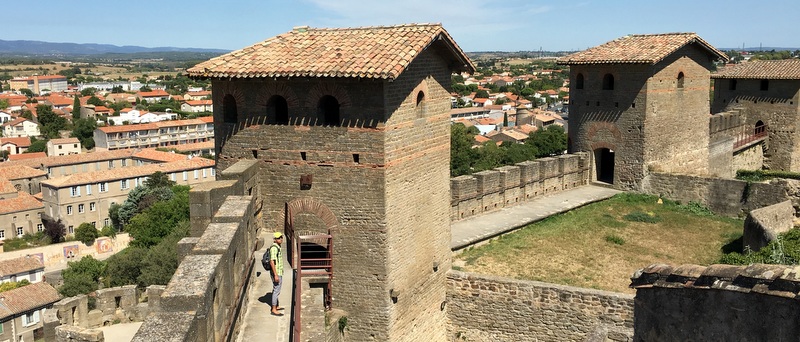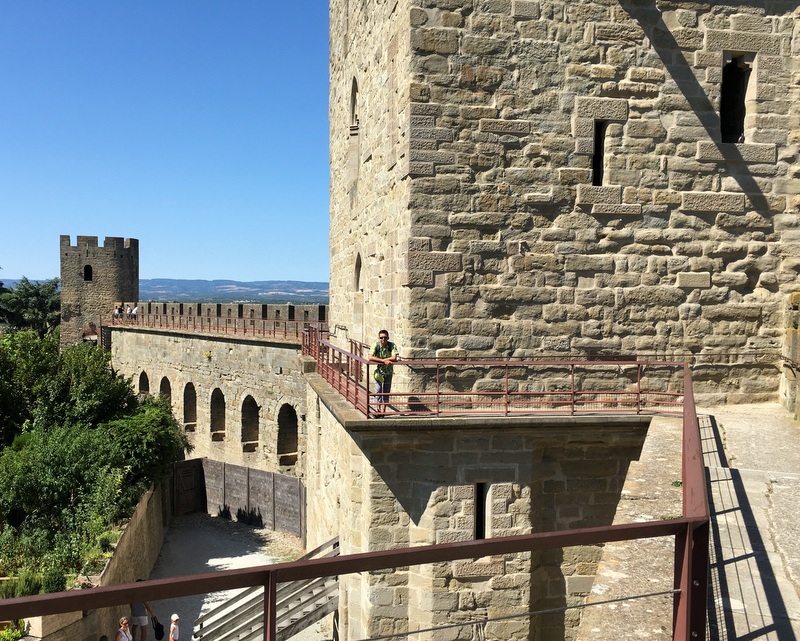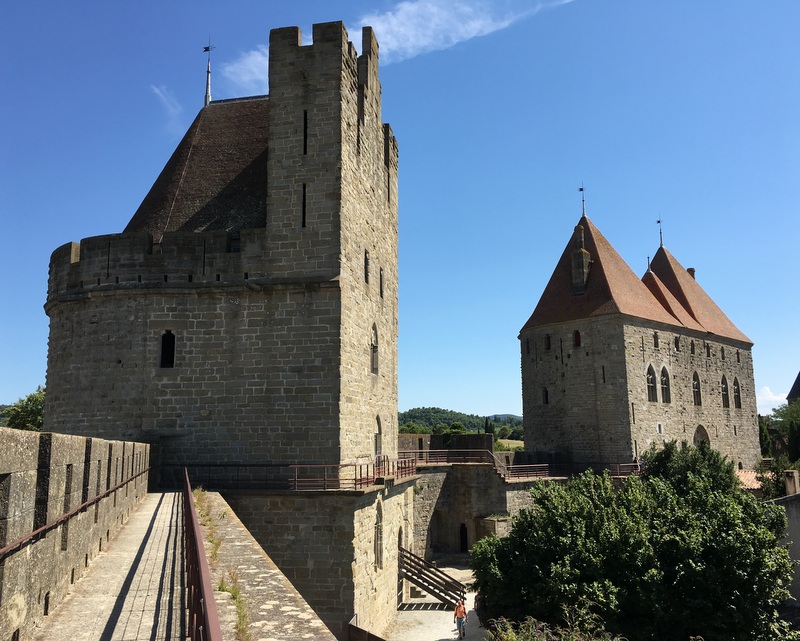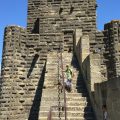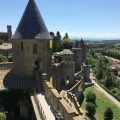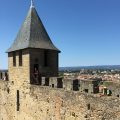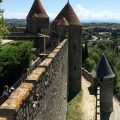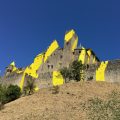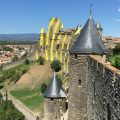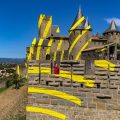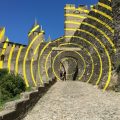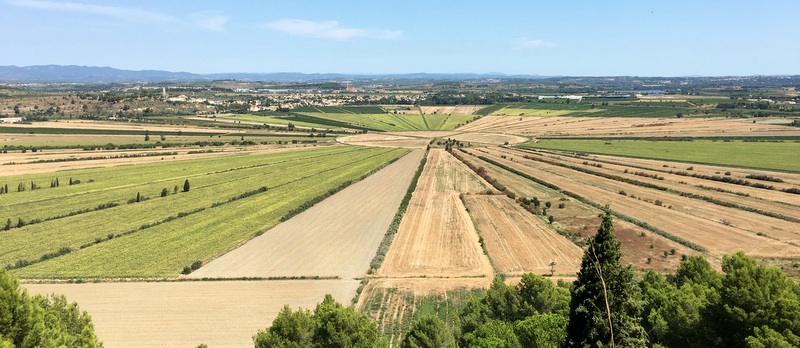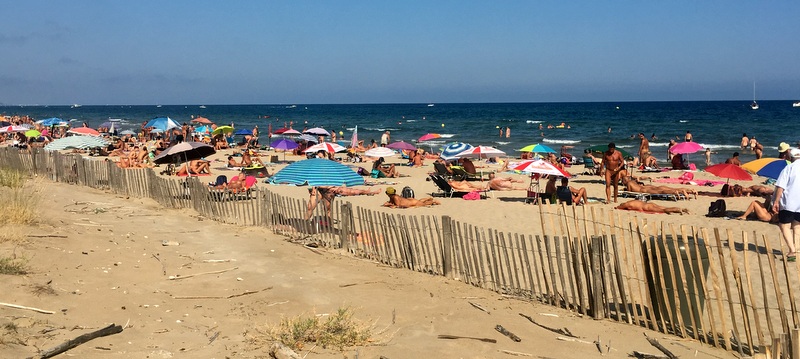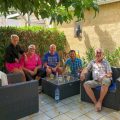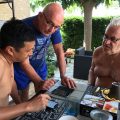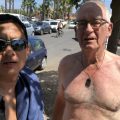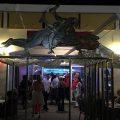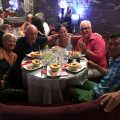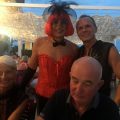See France 2018, part I , for the first part of our trip to France. Here is again a map of the places we visited.
In 1976(!), after my graduation, I applied for a position as a physics teacher at a school in Amstelveen. The rector (headmaster) in those days was Dr B.C. Poeder, he interviewed me and decided to give me the job. He retired long ago, but we had become friends and kept in touch. Therefore I knew that he was now living in France, in the region that Aric and I were going to visit.
I wrote to him, and he invited us to stay a few days in his house, in the small village of Robiac, about 50 km north of Nîmes. Take the road via Vézénobres, he suggested.
I had never heard about that village, but we followed his advice and decided to have lunch there . A romantic, medieval village, no cars allowed, we had to park quite far outside the walls
Walking around we were wondering if there was a place to have some food. We were lucky, found a nice shop where they prepared crepes and galettes. I had a glass of cider. Very nice people too.
When we arrived in Robiac, Carel was already waiting for us at the roadside, otherwise we might have missed the small road leading to his house. The nameplate on the letterbox still refers to his past as headmaster :-). 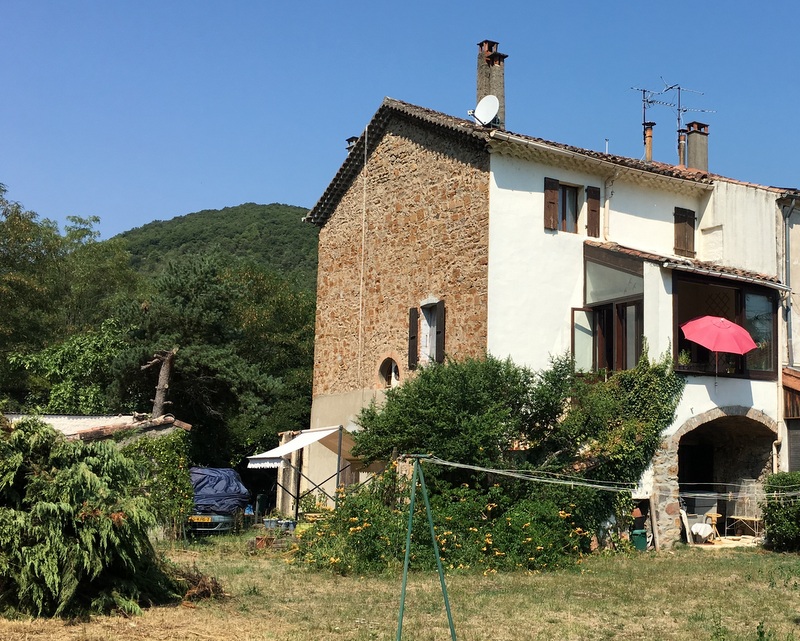
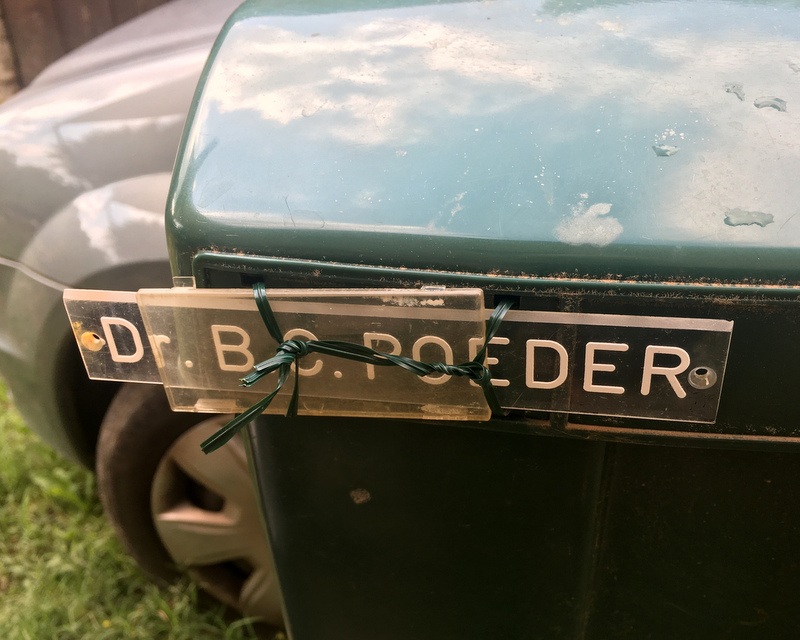
We were warmly welcomed by Carel and Joanne, his wife. The house is part of what before has been a school. The basement, formerly a goat stable, has been transformed in a guest room.
- The guest apartment
- A large swimming pool
- It was still very hot!
A big garden with many flowers.
Our hosts invited us for a nice dinner in Barjac, a nearby village.
The next day we enjoyed the swimming pool and the hospitality of Carel and Joanne, but also made a trip to a cave, the Grotte de la Salamandre. This cave was discovered in the 60s, access was possible only by abseiling through a hole above the cave! Five years ago the cave was opened to the public after an access tunnel had been excavated from the side of the hill.
You can still rappel down in the original way ( for an extra fee), we chose the tunnel..:-). A guided tour, clear explanations, the stalagmites and stalactites were illuminated with varying colors, some really very bright, but also with normal white light.
A very rewarding experience.
When you click on the left picture below to enlarge it, you can see at the top people who are abseiling from the hole in the roof!
The next day we said goodbye to our hosts and continued our trip. We had decided to follow the Gorges du Tarn, a long but very scenic route. It is a canyon, 400 to 600 meter deep, eroded by the river Tarn. Spectacular views, like here of the village of Castelbouc, deep down.
The river is a favourite playground for kayakers.
We had lunch in La Malène
We stayed overnight in Millau, our Airbnb was a nice apartment, located in the historic center of the town.
Millau is nowadays known for its viaduct, but it turned out to be a surprisingly attractive town itself. The next morning we climbed the Beffroi, a bell tower consisting of a 12th-century square tower topped by an octagonal 17th-century tower.
It was a steep climb, but the view was worth the effort. The Millau viaduct was of course clearly visible and deep down the Halles, built in 1899.
In the Middle Ages Millau was an important town, especially because of a bridge across the Tarn river, consisting of 17 spans. Nowadays only one span remains with a house built on it, formerly a watermill. Very scenic. In a nearby cafe we had coffee with a piece of fouace, a cake specialty of Millau.
- New and old bridge
- Only one span remains
- Formerly a watermill
- Coffee with fouace
The Millau viaduct is (at the time of writing) the tallest bridge in the world, with a height of 340 meter above the river Tarn. It is considered one of the great engineering achievements of all time.
The viaduct has become a major tourist attraction. We drove over it and also under it, when you look up at the supporting pylons from the river valley, they look so fragile!
Our next destination was Albi. Here a view of the town with the Sainte Cécile cathedral and the Vieux Pont (Old Bridge) in the foreground. This bridge was originally built in 1035.
We stayed two nights in Albi in a very nice Airbnb , a complete house, a bit outside the historic center, easy parking, with a very friendly hostess, who advised us where to eat where to shop and where to park when we wanted to visit the town center. Airbnb at its best…:-)
- Our “home” in Albi
- Livingroom
- Separate bedroom
- Ground Floor with dining room
The cathedral is an amazing building, constructed between the 13th and 15th century. Those were the days of the Cathar Heresy, and the Roman Catholic church wanted to make a clear statement of strength. What a contrast with for example the Notre Dame in Paris! It looks like a fortress and is claimed to be the largest brick building in the world.
The monumental doorway was added at the end of the 14th century
- Monumental doorway
- Doorway ceiling
The austere outside forms a strong contrast with the flamboyant interior.
- The choir
Next to the cathedral the fortress of the Palais de la Berbie, the Bishops’ Palace, dating to the end of the 13th century
Nowadays it is the Toulouse-Lautrec museum. We had a quick look , I am not really a fan of him..:-)
But the gardens of the Palace are beautiful.
For dinner, our hostess had advised us restaurant Lautrec in Albi and that was a good choice!
Albi has of course many interesting old houses. The left picture also shows the belltower of the cathedral
Another useful advice of our hostess was to visit the small village of Puycelsi, one of the Most Beautiful Villages of France . There are more than 150 of them…:-)
The weather was a bit grey during our visit, here is a view of the village
We parked our car outside the walls and explored the narrow streets, visited the church and had lunch.
- The church
- Interior
- Lunch
During our trip we had already passed many sunflower fields, but on our way to Carcassonne we found such a beautiful field that we really had to stop to take pictures..:-)
We visited Lautrec, another of the Most Beautiful Villages of France. The view of Lautrec might look similar to the view of Puyselci, but careful inspection of the two pictures will show you they are not the same…:-)
The weather was beautiful again, that could be the reason that we liked this village better. The walls are still there and the 14th century market square is attractive
- Church Interior
We had lunch in a nice restaurant , Le Clos d’Adele. Good food, pleasant service, value for money.
After lunch we visited one of the other attractions of Lautrec, a 17th century windmill. A steep climb, but worth the effort, we could enter the mill and had a nice view of the surroundings. When there is enough wind the mill is still operating.
With Airbnb the host often doesn’t live in the same building, so you have to contact him/her about your arrival time. That works well in general, but in Carcassonne it took us some time, the apartment also looked more like a hotel room. But it was ok, from our window we could see the medieval fortress in the evening light. But what were those strange yellow surfaces on the walls and towers?
The next day we explored the old town. It the largest walled city in Europe and really impressive.
Not surprisingly it is a major tourist attraction with crowds of visitors in the narrow streets. We were lucky to find a restaurant with a secluded garden, where we had a nice lunch, again value for money
The name of the restaurant is Le Jardin du Carcasses, it has good reviews
The Church of Saints Nazarius and Celsus was built in its Gothic form at the end of the 13th century on the site of an earlier church. It was the cathedral of Carcassonne until 1803. Beautiful interior. But keep in mind that this church and also the citadel itself have been “renovated” in the 19th century by the French architect Viollet-le-Duc!
Access to the medieval city is free, but to access the fortress and the walls you have to pay an entrance fee.
Carcassonne is a Unesco World Heritage site already for 20 years and of course that had to be celebrated. The Swiss artist Felice Varini was asked to create a project.
Quoting Wikipedia:
Felice paints on architectural and urban spaces, such as buildings, walls and streets. The paintings are characterized by one vantage point from which the viewer can see the complete painting (usually a simple geometric shape such as circle, square, line), while from other view points the viewer will see ‘broken’ fragmented shapes.”
In this case he projected concentric circles on the walls and towers of the citadel. They look broken, only from one vantage point they are circles. Quite spectacular, of course many specatators, not easy to take a picture without people.
In the evening we came back especially to admire Varini’s work
Our trip was coming to an end, our last destination was the naturist village of Cap d’Agde. On our way we passed this strange landscape, the Étang de Montady, a wetland, drained in the 13th century.
What to say about Cap d’Agde? Here is a picture of the beach, when you enlarge it, you will see that the sunbathers are naked…:-)
Nudist beaches are common in Europe, but Cap d’Agde is a nudist village, where you walk around, have a drink/ food on a terrace, go to the supermarket etc, all in your birthday suit..:-)
We had booked a room (Airbnb) with Bernard and that was a lucky choice, because he had been living there for many years and could tell us the do’s and don’ts. One don’t is that you can not take pictures of other naked people. Another one is that at night, during dinner, you are supposed to be a bit dressed at least…:-)
Bernard had two other guests, Christiane and Alain, a nice couple who had been regular visitors of Cap d’ Agde for many years. We became friends almost immediately…:-) The village itself is a nondescript conglomerate of concrete apartment complexes, but the company made our visit very enjoyable.
- Our company
- Aric as IT-expert
- Coming back from the beach
- Lunch
The second (also last) night of our stay we were invited to join our new friends to a dinner in a nearby restaurant. There was music, there was drag, and both Aric and I have been dancing! A fun evening and a worthy ending of our trip
- The restaurant
- Our company
- Bernard with Philippe and Michel
- Dancing!
It is amazing how much you can do in twelve days. After our return ot Amsterdam we needed several days to recover…:-)

